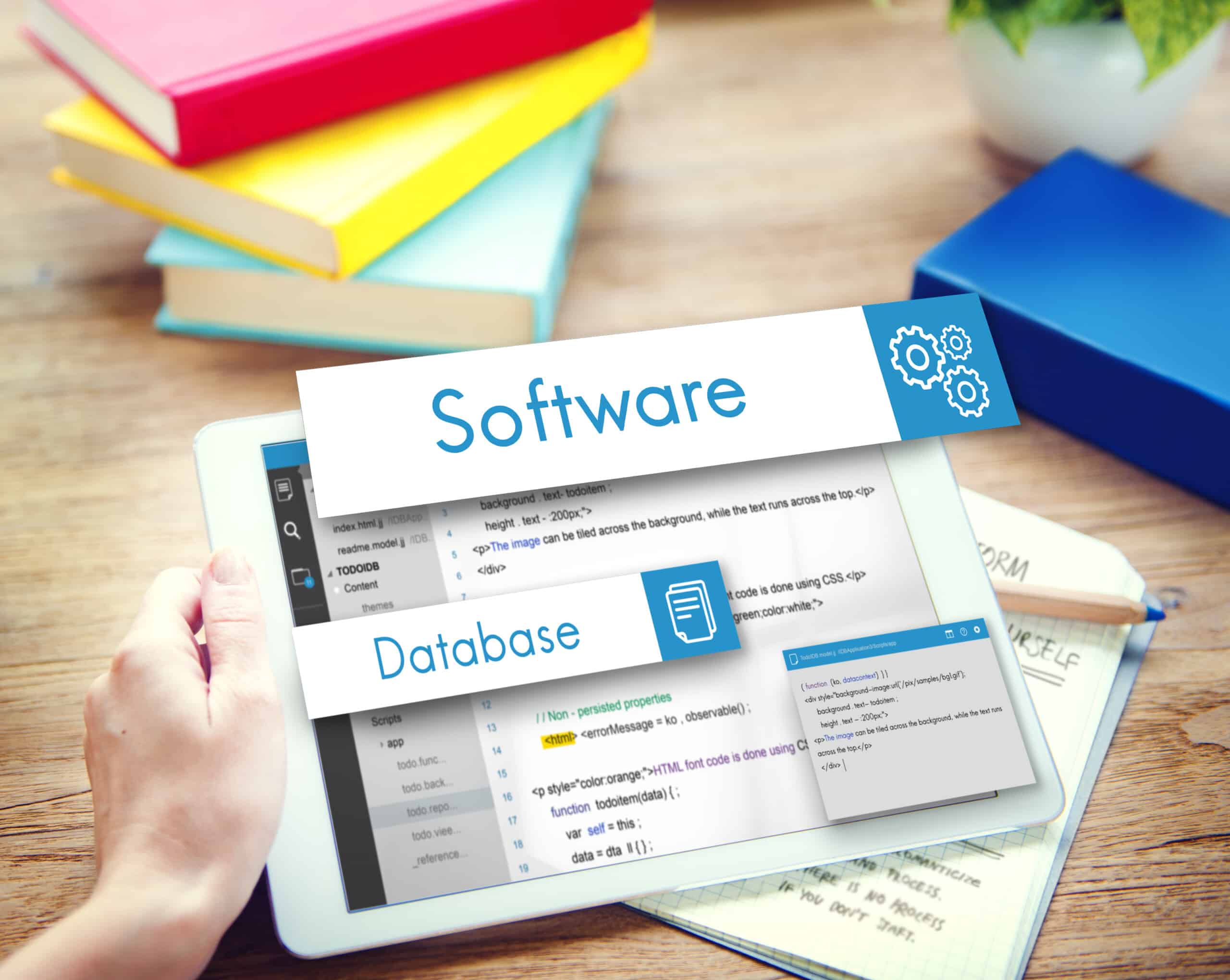Want a software solution that accurately meets your needs and is able to scale as your business grows? Custom software development is the right approach for that.
But what is custom software development?
Understanding Custom Software Development
Custom software development is a structured process that can transform your unique business needs into tailored software solutions.
In this process, tailored software applications are created according to the specific requirements of an individual or an organization. Unlike off-the-shelf solutions, custom software development makes sure that the software solution aligns perfectly with the organization’s objectives.
The key characteristics of custom software development include;
- Customization
- Scalability
- Integration
- Ownership and Control
This means that the tailored software solution can be customized according to your growing needs. It is also capable of scaling as your business grows. Not only that, a custom software can also be integrated with your current systems. This helps streamline business operations such as data sharing and management.
With custom software, you get full control and ownership of the solution. This means that you no longer have to rely on the vendors, which is often the case with off-the-shelf solutions.
Custom software development also offers multiple benefits, such as;
- These software solutions help businesses stand out in the competitive market. They do that by providing unique functionalities tailored according to the needs of the business. This helps streamline business processes and directly affects business growth.
- Custom software is cost-effective in the long run. Yes, contrary to popular belief that custom solutions cost a lot, they prove to be more cost effective than off-the-shelf solutions. This is because off-the-shelf solutions often require upgrades and cost more for any added functionalities. On the flip side, custom software can easily be scaled according to your needs.
- These tailored solutions provide better security. It is because custom software can be designed with certain security measures tailored to your needs. This helps reduce vulnerabilities that are often associated with generic solutions.
Now that you know what custom software development is and how it can help your business, you must also understand the development process.
Understanding the development process is important because it can be complex and challenging. Especially if not approached carefully. The development process requires a well-defined and structured approach for the successful delivery of a high-quality, tailored software solution.
To better understand the custom software development, let’s look at the step-by-step process.
The Step-by-Step Process
The process of custom software development adheres to the Software Development Lifecycle (SDLC). SDLC is the time between when the product is designed initially to the final release of said product. To create a high-quality software solution, the development teams follow the following steps.
1- Planning
Planning is the very first step in the SDLC, as it is for most processes. In this initial step, the client’s needs, business goals, and challenges are understood. This also includes conducting thorough discussions, interviews, and workshops among the development team and all the stake holders.
Once all the requirements have been defined, a thorough project plan is created. This plan outlines the;
- Timeline of the project
- Resources required
- Milestones to be achieved
Here’s the complete breakdown of the planning step.
- In the planning phase the very first step is to understand what the client wants. This means having in-depth conversations with the client to understand their vision for the project.
- The next step is to gather all the requirements. Requirements that are beyond features, such as understanding software integration and problem solving needs to create unequivocal guidelines.
- After requirement gathering, the project is planned. This involves creating timelines for the project, allocating resources, and creating milestones.
2- Feasibility Assessment
Feasibility assessment is the next step. This involves evaluating the technical, operational, and economic factors that can affect the project. It is done to make sure that the proposed software solution aligns perfectly with the client’s objectives.
In this step, multiple factors, such as programming languages, frameworks, and tools to be used for the development are evaluated. Other than these, factors such as training needs and expected financial returns and benefits are analyzed. This helps to make sure that the project remains within budgetary limits.
3- Product Design
The third step is to give the product a visual. This means that the system architecture, including database structure, user interface, and functionality is designed in this step.
The design process involves creating wireframes, prototypes, and mock-ups to visualize how the end-product will look. In this step all the stakeholders are kept in the loop for collaborative feedback. The feedback helps in further refining the design to meet the user expectations.
Here’s a complete breakdown of the product design process.
- The first step in the design process is to design the database structure. This involves considering factors like data relationships, normalization, and indexing for optimal performance. The goal for this is to create a strong foundation that not only accommodates current needs but also facilitates future needs.
- The next step is to create an intuitive and visually appealing interface. An interface that enhances user experiences. Design elements such as navigation menus, buttons, and the overall layout of the product are carefully designed in this step. This makes sure that the product is easy to use and easily accessible for the users.
- After UI design, functionalities are defined. This includes understanding how users will interact with the software and how the system will respond to them. “It is a classic case of what’ll happen if I click on this big red button.” In this step, all the features, workflows, and user interactions are outlined. This helps make sure that each functional component aligns accurately with the project requirements and user expectations.
- The last step in the design process is to present a visual of the product to all the stakeholders. This visual representation is a prototype that shows how the final product will work and look like.
4- Development
The 4th step in the custom software development process is where the development begins. The actual software is built after the design is approved or finalized. Agile methodologies are the most common choice for the development process. This is because it fosters an iterative process, allows continuous feedback, and offers the flexibility to cater to any changing requirements.
Here’s how the development process progresses in this phase;
- Developers begin the software development process based on the specifications outlined in the previous step. During this phase, developers convert the system architecture, UI designs, and functionalities into working code.
- The next step is to create a version of the software with only the essential features that are required to address the core needs of the audience. There is a name for this process as well. It is called minimum viable product (MVP) development. This helps make sure that the software delivers what it promises to the users.
- Once it is confirmed that the essential features work as intended, the agile development process takes center stage. This means that the developers can now have more flexibility and work with an iterative approach.
- Developers also make sure that they look beyond just the functionality and the features. This means that they adhere to best practices and coding standards. They do that by continuously reviewing the code. This helps make sure that the software is free from issues, maintainable, and scalable.
5- Testing
Testing is a crucial aspect of the custom software development process. This helps in identifying any potential areas of improvement, bugs, or issues within the software. Here’s how it works;
- The testers comprehensively test individual components or modules of the software. This helps identify and rectify any issues at the most fundamental level.
- After this, integration testing is carried out. This process helps find or identify any potential conflicts or inconsistencies that may arise during this stage.
- Then, the overall functionality of the software is tested. This provides helpful insights into the system’s performance.
- Testing is not a touch and go process. This means that testing is an ongoing, continuous process. This proactive approach to quality assurance helps identify and address issues early on. This helps reduce the likelihood of any critical bugs. It also helps improve the overall reliability of the final product.
6- Launch
Once the testing phase is over, the software is then deployed. In this step, careful planning is done to reduce the downtime and make sure the software transitions smoothly from the development phase to live operational stage.
7- Continuous Support & Maintenance
One thing that you should never take lightly in custom software development is the post launch maintenance and support. This is absolutely crucial to make sure that your custom software keeps running smoothly and as intended. You’ll also need continuous maintenance and support when your business grows, and you want your custom solution to scale with it.
Looking For Custom Software?
Custom software development is an intricate process that requires continuous collaboration. This means that you need a team that is proactive and always keeps you in the loop. Lucky for you, that’s what we do.
At Seattle software developers, we make sure that you are not just a client but a partner in the development process. We understand that each client’s needs are unique and offer tailored solutions accordingly. So, if you have an idea, feel free to share it with us, and we’ll help bring your vision to life.






